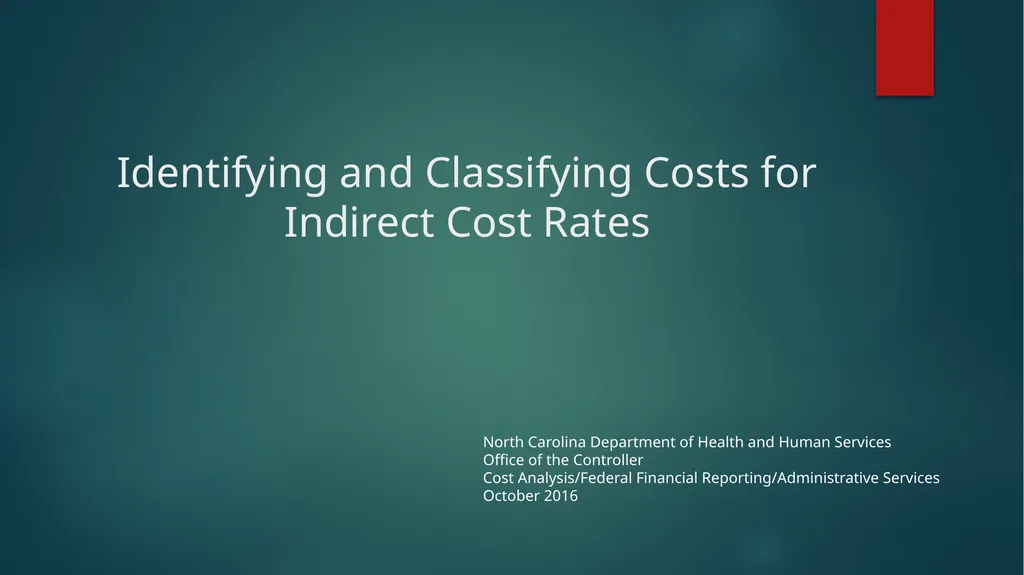
Identifying and Classifying Costs for Indirect
Author: briana-ranney | Published: 2025-05-29
Description: Identifying and Classifying Costs for Indirect Cost Rates North Carolina Department of Health and Human Services Office of the Controller Cost AnalysisFederal Financial ReportingAdministrative Services October 2016 Objectives Background
Download Presentation
Download the PPT/PDF: Download
Transcript:
Loading transcript…